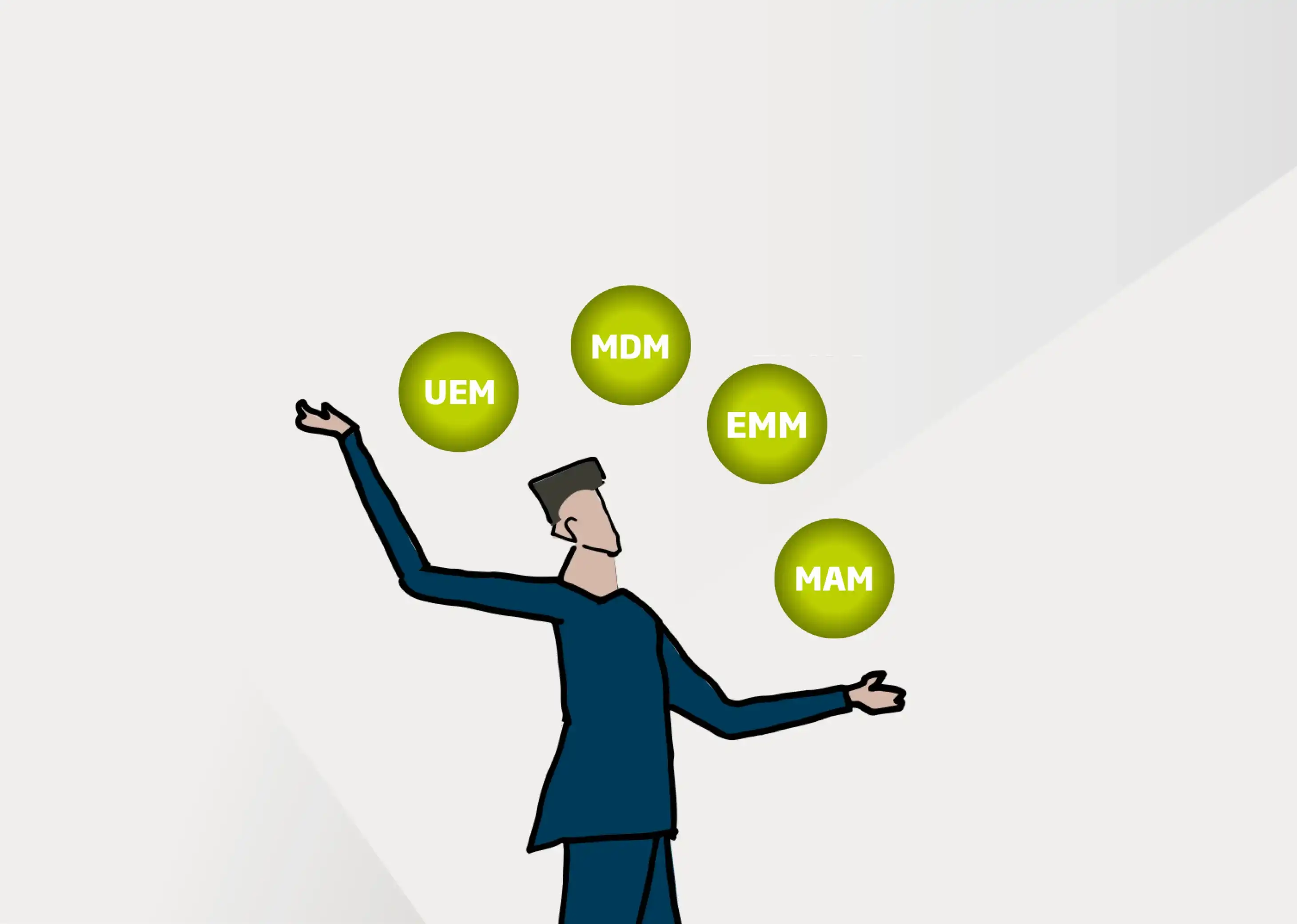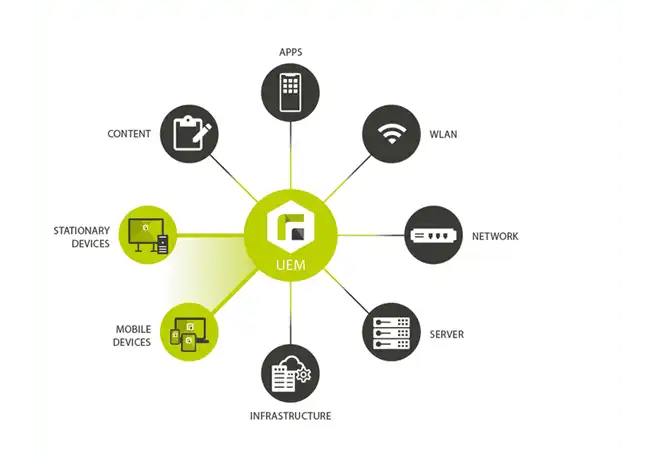

The difference between UEM and MDM
UEM or MDM? The juggling acronyms and technical buzzwords
The world of IT is a conspiratorial cosmos of thought, a circle of rationality and, for the uninitiated, a thicket of strung-together numbers and letters and signs you’ve never seen before.
A bit like blinking into an open bag of alphabet soup. In addition to the codes that are supposed to make sense in the end and make programs run, the IT world is peppered with acronyms, i.e. short words that are composed of the first letters of several words. The term EDP is one such example, standing for Electronic Data Processing and originating from the dinosaur age of IT (which in turn is also an acronym).
Digital fleet management
An important component of the thoroughly digitalized life is the multitude of mobile computing units in the form of mobile phones, tablets, laptops, desktop computers, but also wearables or IoT devices. Here we could talk about the digital “fleet”.
In the IT world, the term Unified Endpoint Management (UEM) is becoming increasingly widespread and is often used synonymously with MDM. In principle, UEM - spoiler alert - is also an MDM solution, only it can do more. MDM is - what else - the acronym for Mobile Device Management and refers to the software that manages mobile devices. So, an MDM is a program that has to be able to do a lot.
All mobile devices are enrolled and managed here, so that you as an IT administrator have full control over the issued devices. Apps and programs can be loaded, updated, prohibited, or allowed. An MDM is, according to historical consensus, a system that can only manage mobile devices. Modern MDMs can manage different operating systems, such as Android or iOS, but usually struggle with desktop operating systems.
We skip EMM, Enterprise Mobility Management, which functionally paved the way as an evolutionary intermediate stage to the crowning achievement of “fleet management”, UEM (Unified Endpoint Management).
The strategy of UEM products is to create a solution of management units for all technical IT products of a company, schools, or other entities. UEM solutions contain all the features and applications that can be expected from an MDM but can do even more and have a larger “radius of action”. A UEM is virtually the luxury full-featured administration. Of course, mobile devices can be managed, but desktop operating systems, interactive displays, wearables, servers, or network components are also included.
UEMs should additionally be data protection compliant, usability friendly and offer operation in the cloud or as an on-premises installation in the company’s own data center.
UEMs manage devices, apps and their configuration. A distinction is made between corporate devices (COD - Corporate Owned Device) and school or personal devices (BYOD - Bring your own Device).
Digital education in schools
UEMs must meet many needs and users, as the example of digitization in schools shows: Through the ideal management and interaction of the various devices, a digital school curriculum should be controlled.
For the procurers, i.e., the public carriers such as municipalities or central data centers, a UEM must be legally secure and cost-effective.
The IT admin who has to enroll, manage and allocate all the devices with the UEM wants to have a solution that works intuitively and technically, manage the servers and always have a full overview.
The teacher wants to use the issued devices to create a disruption-free, pedagogically valuable, and experiential digital lesson.
But the actual target group, the students may not even notice the UEM, because only then the system has its justification.
And now we come to the real purpose:
Of course, an MDM should have completed the evolution to a UEM solution and the software should have passed all the mental technical checklists. But what is actually the point of the much-cited digital education? Not the juggling of buzzwords and acronyms or the understanding that technology is an end in itself.
Rather, software is a trade-off between technical implementation of features and meaningful manageability in everyday life, controllable even by non-IT professionals. Software should be a solution or at least a reduction of everyday problems. The administrative solutions - whether UEM or MDM - are only silent helpers that should enable the main actors - namely the students - to have a dusted-off, pedagogically valuable, chaos-free digital lesson. Free of poorly copied worksheets, chalkboards, and overhead projectors.
Is Relution now an MDM or UEM?
Both. The focus is on the management and control of mobile devices, as this is the focus in the education and public sector. However, the development is clearly moving in the direction of a UEM solution.
Not out of technical end in itself, but out of school necessity. For example, the increased use of laptops under Windows and the use of digital whiteboards required a software-side adaptation and further development of Relution.
Foto: Raphael Pohland/ MWAY